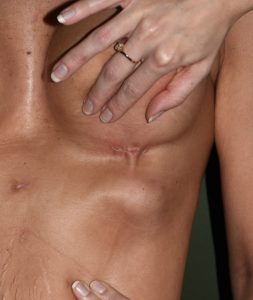Breast augmentation is a very successful cosmetic procedure that, fortunately, is associated with a low risk of medical complications such as bleeding or infection. When talking to my Indianapolis plastic surgery patients about breast augmentation, I try to cover the most likely complications which can occur. Most of these will center on issues relating to having an implant and the short and long terms problems that may develop.

First described by Dr. Henri Mondor, a French surgeon, in 1939, this condition is a rare entity of the subcutaneous veins of the anterior chest wall. The trauma of raising the pectoralis muscle or disturbing the glandular tissue of the breast causes blood to stagnate in some of the draining veins. The sudden appearance of a vertical cord on and below the breast extending into the abdomen is classic. It is initially red and tender and subsequently becomes a painless, tough, fibrous band that is accompanied by tightness and pulling on the skin. It may be difficult to fully raise one’s arm. This band remains for varying periods up to several months. The condition is not harmful and will eventually subside. No specific treatment is needed although it can be very tender and painful. Anti-inflammatory and pain medications can be helpful in this regard. Antibiotics have not been shown to be helpful nor would they be expected to be given that blood clotting and inflammation is the problem, not bacterial infection.
To the woman undergoing breast augmentation, the development of Mondor’s syndrome after surgery is unexpected and disturbing. One may wonder why we didn’t talk about it before surgery but it is just so rare that it doesn’t fall into what we should be most concerned about. It should be comforting to know that it is a self-solving problem that will have no long-term negative effects on the breast result.
Dr. Barry Eppley
Indianapolis, Indiana


